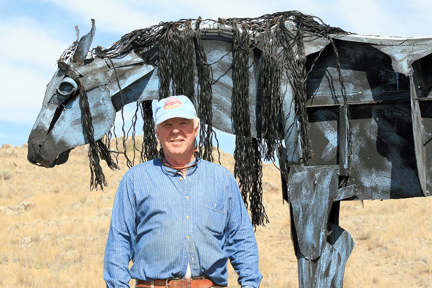 Passersby on Hwy. 287 see a herd of 39 horses milling about on a hillside west of the road, about halfway up Kamp Hill. Some stopped to gawk or take pictures as crews were installing the sculptures Friday, Sept. 13, 2013. Others, including a semi-trailer emblazoned with a Coca-Cola logo, honked as they passed.
Passersby on Hwy. 287 see a herd of 39 horses milling about on a hillside west of the road, about halfway up Kamp Hill. Some stopped to gawk or take pictures as crews were installing the sculptures Friday, Sept. 13, 2013. Others, including a semi-trailer emblazoned with a Coca-Cola logo, honked as they passed.
The sculptures, each larger than life, were meticulously constructed over 15 months out of recycled plate steel and other parts, and painted blue. Manes and tails were fashioned out of de-braided nylon rope. Some feature moving parts that enable the animals to move in the wind, giving them a more lifelike effect. But they're not horses, Dolan quickly points out.
"They're not horses; they're images of horses; there's a difference," he said. "If I had tried to do actual horses, it would have been a horsey project, not art.
Three Forks Herald